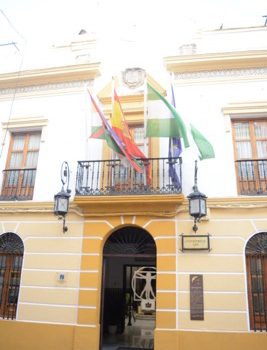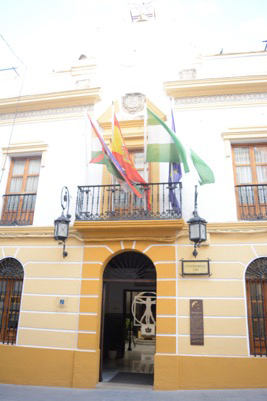
Arjona Town Hall

The building that houses the Arjona Town Hall is a traditional Andalusian-style house from the 19th century that Juan Eslava Galán describes very precisely:
(…) The Arjona Town Hall was an Andalusian-style house with a bright, beautiful inner patio with marble flooring and surrounded by columns. Along the walls, a beautiful tile plinth ran halfway up. There were pots of aspidistras in the corners; on the walls, notice boards and large, faded aerial photographs of the town. At the end there was a marble staircase that led to the upper floor. (…)
The Arjona Town Hall is one of the last places that Pío Exposito, the protagonist of the novel, visits in the city. He only intends to return an umbrella to the secretary, but he will come across a surprise.
Once inside the building, it is convenient to visit the room called the Sala de la Antigua Alcaldía, which is used as a reception place for official visits and has a historicist decoration with Islamic medieval reminiscences, with typical elements of Mudejar, Nasrid or Caliphate artistic styles and, thus, differentiated from the rest of the townhall. This decoration was originally located in the palace-house owned by the Baron of Velasco, Fernando Ruano Prieto.